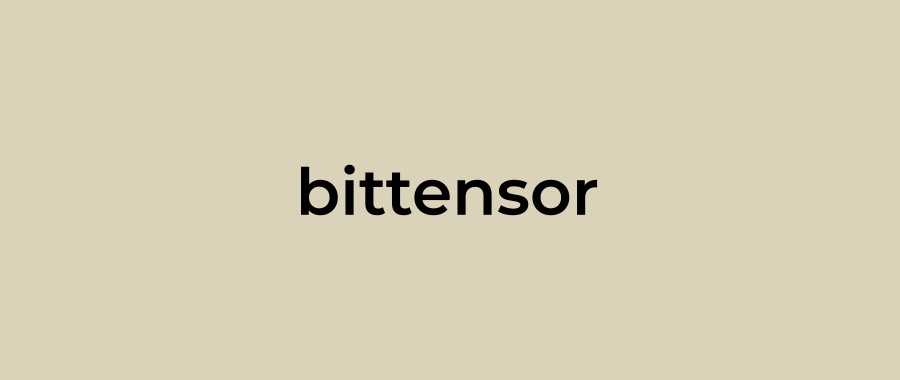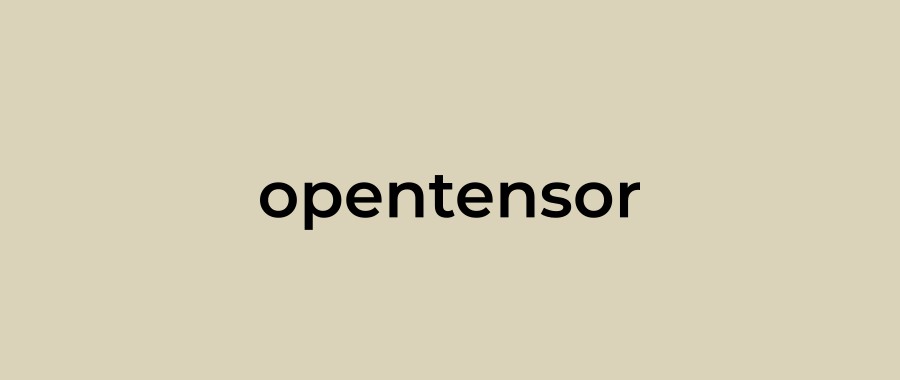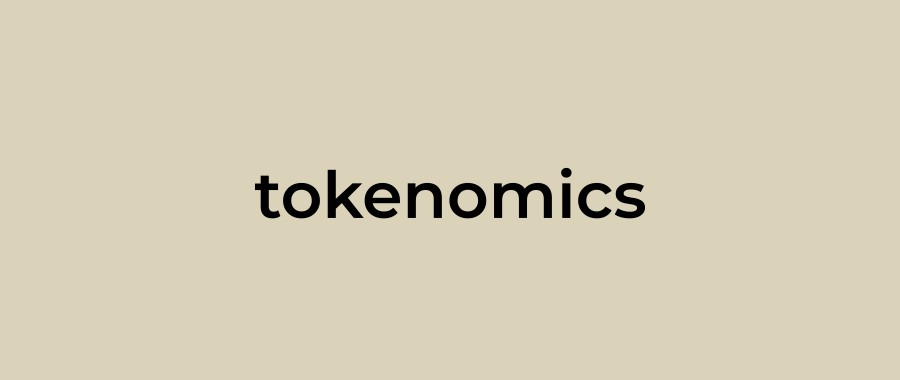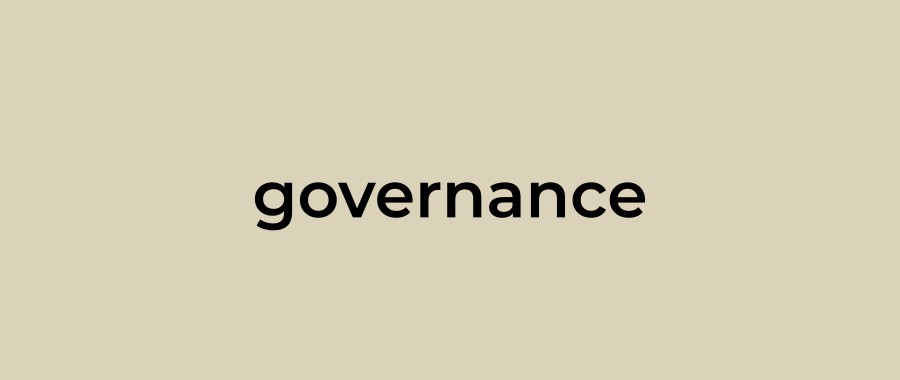Bittensor Learn
Bittensor: Explained

Is Bittensor a place in cyberspace where the talented are fairly rewarded, and the curious ones are likely to find what they're searching for in this ever-growing realm of incentivized intelligence? Let's find out.
The purpose of this article is to provide a concise explanation of Bittensor, based on official documentation.
Bittensor is an open source protocol powering decentralized, permissionless, censorship-resistant peer-to-peer network developed by the Opentensor Foundation.
It is designed to enable incentivized production of digital commodities, especially various applications of Artificial Intelligence (AI), while also including its prerequisites: computational power, data storage, and more.
The production of these commodities is conducted via Subnets, specialized networks that are interoperable and can exchange data with each other, thereby creating an integrated digital ecosystem.
Within each Subnet, Miners compete by delivering answers (outputs) to queries (inputs) that are requested and subsequently ranked by Validators.
The Validators collectively utilize the Yuma Consensus algorithm to set stake-dependent weights, which determine the distribution of the ecosystem currency, $TAO, in proportion to the value contributed by each Miner. Although the network is open to all, the mining process remains highly competitive.
Competition is driven by the limited number of slots allocated for Subnets, Miners, and Validators. After the immunity period, the lowest-performing Miners are replaced by new registrants, and the least-valued Subnets may also be replaced. Furthermore, a validator's standing is dependent on the amount of $TAO delegated to them by stakeholders, and their position can shift rapidly if they lose this trust.
These dynamics establish a continuous feedback loop that ensures constant improvement in the quality of outputs, regulates demand for the commodities provided by each Subnet, and determines Validators' influence over the network's state.
The most innovative aspect of Bittensor's architecture is the integration of the blockchain layer (incentive) with the production layer (compute) in a symbiotic relationship that enhances the network's scalability.
The blockchain layer does not bottleneck compute bandwidth, instead, it facilitates widespread adoption by incentivizing a diverse array of experts to join the ecosystem.
The governance layer is transparently integrated into the blockchain layer. As Bittensor evolves from a Opentensor foundation-led structure to one owned by the community, the network's democratic functions are managed by two separate bodies: the Senate and the Triumvirate.
Bittensor's vision is to leverage digital markets to promote the growth of decetralized, censorship-resistant AI, ensuring that the power and ownership of machine intelligence are broadly distributed among the public. This approach stands in contrast to traditional centralized models, where control and benefits are typically concentrated in the hands of a select few.
Resources:
[1] Official website:
[2] Incentivizing Intelligence: The Bittensor Approach:
https://bittensor.com/academia
[3] Official Bittensor Developer Documentation:
[4] TAO Token Economy Explained:
https://opentensor.medium.com/tao-token-economy-explained-17a3a90cd44e
[5] Official Discord Channel:
Made with ❤️ by the Bittensor SN 16 – BitAds
Legends in the Making

Going beyond the adage "Be the change that you wish to see in the world," one could try to create circumstances in which what you want to see manifests automatically, and it seems like Opentensor does both.
The Opentensor Foundation was established in 2021 by Jacob Stevens and Ala Shaabana, as a non-profit organization dedicated to developing Bittensor.
Bittensor's concept originated in 2015, with Stevens and Shaabana joining forces in 2019. Their shared vision for the future of Artificial Intelligence led them to pursue the creation of the largest decentralized AI network in the world…
January 2021 saw the launch of Bittensor's first main network iteration, 'Kusanagi'. By May 2021, it was paused to refine consensus mechanisms. In November 2021, 'Nakamoto' emerged as Kusanagi's successor. On March 20, 2023, another fork improved the kernel code, resulting in 'Finney', named after Hal Finney.
Hal Finney was a pivotal figure in digital currency, being the first to receive a Bitcoin transaction from Satoshi Nakamoto. His legacy continues to inspire the digital currency and cryptography fields. The vast computational power of the Bitcoin network, which Finney contributed to, served as an inspiration for the creation of Bittensor, aiming to harness a similar level of distributed computing for the advancement of AI.
Opentensor is steering Bittensor into a governance model led by the community, progressively decentralizing authority to enhance public involvement. This transformation is designed to democratize the trajectory and advancement of AI technology.
The Foundation is constanly on the lookout for innovative minds to join their team as the organization continues to evolve, seeking talented developers who are passionate about shaping the future of decentralized AI.
Resources:
[1] Official website:https://bittensor.com
[2] Official linked in profile: https://www.linkedin.com/company/bittensor/
[3] Official Discord Channel: https://discord.com/channels/799672011265015819/799672011814862902
[4] For those who want to join the ongoing Bittensor Revolution: https://opentensor.ai/
Made with ❤️ by the Bittensor SN 16 – BitAds
TAO tokenomics

The tokenomic framework of $TAO is similar to that of Bitcoin, adopting a hard cap of 21 million coins as the maximum supply that will ever be minted, along with a halving cycle that occurs every four years. [1]
Approximately every 12 seconds, a block is completed, and a reward of 1 $TAO is distributed among Miners, Validators, Subnets owners and delegators. This results in the emmision of 7,200 $TAO daily. Once half of the total $TAO supply has been issued, the rate at which new $TAO are created will be reduced by 50%. For instance, by the 12th halving event, projected to happen in 2069, the total amount of $TAO in existence is expected to be around 20,994,873 $TAO.
The first halving event for $TAO is anticipated to occur around September 2025. Consequently, the quantity of $TAO in circulation is expected to equal the current amount of Bitcoin in circulation by the year 2037.[2]
The implementation of Recycling, a process where $TAO tokens spent on Miners registration fees are returned to the pool, effectively delays the date of the halving event.
The cost of registration within Subnets fluctuates based on the number of Miners seeking to join. If the total daily expenses for registration surpass the daily emission of $TAO, the currency could, in theory, become deflationary.
$TAO was fair launched, meaning there were no pre-mined tokens or Initial Coin Offerings (ICOs).[3]
Currently the transaction cost is 0.000000150 $TAO or 150 RAO (1 $TAO = 1,000,000,000 RAO)
Staking (Delegation) is natively supported.
Resources:
"Bittensor Paradigm" by Jacob Stevens "Const":
[1] https://bittensor.com/about
Taostats by mogmachine
"TAO Token Economy Explained" by Opentensor Foundation:
[3] https://opentensor.medium.com/tao-token-economy-explained-17a3a90cd44e
Made with ❤️ by the Bittensor SN 16 – BitAds
KYC (Know Yuma Consensus)

Many Bittensor enthusiasts are curious about the Yuma Consensus - the mechanism responsible for determining the distribution of $TAO among Bittensor Miners [1].
How does it work? I cannot explain it more precisely than the enigmatic Yuma Rao in the Whitepaper.
However, its core purpose is: to ensure that the collective scoring performed by Validators justly compensates the Miners.
The Yuma Consensus algorithm is a mechanism that uses the stake-weighted matrix W to determine how incentives should be distributed among the Subnet Miners. It also calculates dividends for the Subnet Validators. Essentially, this algorithm translates the performance assessments into tangible rewards, incentivizing Miners to perform well and Validators to accurately assess performance.[1]
The algorithm is designed to prevent a small, coordinated group (often referred to as a Cabal) from exploiting the larger, dispersed majority through unfair self-serving practices, like favoring their own Miners.
The mechanism operates by reducing the rewards for those whose scores deviate from the majority's consensus. As a result, these individuals or groups have less influence in subsequent scoring rounds, while the majority's influence is strengthened. Over time, this ensures that the majority's fair and honest assessments prevail.
Yuma Consensus, is "agnostic," which means that the algorithm is designed to operate independently of any specific Subnet, or type of content. Focusing on the integrity of the process rather than on external factors that could introduce bias. It ensures that rewards and Validations are based solely on the merit of the work performed, as measured against the algorithm's predefined criteria.
"Bittensor Developer Documentation" by Opentensor Foundation
[1] https://docs.bittensor.com/yuma-consensus
Bittensor: A Peer-to-Peer Intelligence Market by YUMA RAO
Made with ❤️ by the Bittensor SN 16 – BitAds
$TAO

Flows to those who share the best answers.
Stays with those who ask the right questions.
Cannot be faked, better used than traded
- as τhe τruτh over τime iτ carried.
The native token of the Bittensor protocol: $TAO, used as an incentive and abstract representation of the intelligence produced inside the network.
1 $TAO is eqvuivalent to 1,000,000,000 (1 billion) $RAO - the smallest denomination of $TAO.[1]
$TAO functions as a currency that enables:
- access to the network,
- the ability to query the network, and
- governance over the network.
Staking the token is the key mechanism that underpins and activates these functions.
Built on Polkadot's Substrate, a blockchain development framework chosen for an unique use case - to separate the incentive layer and production layer within one integrated ecosystem.[2]
The tokenomic framework of TAO draws inspiration from Bitcoin, adopting a hard cap of 21 million coins as the maximum supply to ever be minted. While TAO introduce its own unique features and rules within its tokenomics, the core principles it shares with Bitcoin aim to establish a similar level of trust, scarcity, and value appreciation over time.[3]
From the very beginning, the Opentensor Foundation took many precautions to ensure that TAO achieves the status of a commodity. This classification is significant, as it implies that TAO will not only serve as a medium of exchange or a store of value but will also be treated as a basic good that can be interchanged with other tokens of the same type.
Consequently, the team opted for a fair launch, meaning there were no pre-mined tokens or Initial Coin Offerings (ICOs). This approach guaranteed that each TAO token represented genuine machine learning efforts. Mirroring Bitcoin's introduction of a decentralized currency independent of centralized authority, Bittensor envisions a future where intelligence is impartial and free from corporate influence.[4]
"Bittensor Developer Documentation" by Opentensor Foundation
[1] https://docs.bittensor.com/glossary#tao
[2] https://docs.bittensor.com/glossary#substrate
"Bittensor Paradigm" by Jacob Stevens "Const"
[3] https://bittensor.com/about
"TAO Token Economy Explained" by Opentensor Foundation
[4] https://opentensor.medium.com/tao-token-economy-explained-17a3a90cd44e
Made with ❤️ by the Bittensor SN 16 – BitAds
Bittensor Learn Preface

Bittensor: Too good to be true? Possibly - even better.
When one encounters Bittensor, it seems there is a progression through three distinct stages:
- initial skepticism, followed by
- a period of confusion, and often
- culminating in a sense of elation.
The motivation behind the creation of this educational resource is to hopefully help readers move beyond confusion.
Disclaimer: While the articles are grounded in official documentation, the author acknowledges a personal sense of elation and apologizes for any potential bias this may have introduced.
Special thanks to: FirstTensor - for bringing the BittensorWiki to life, and Corcel - their tools, powered by the Bittensor, played a pivotal role in the editing process.
We hope you find the Bittensor Learn section useful.
Cheers!
Made with ❤️ by the Bittensor SN 16 – BitAds
The role of Validators

Choosing a reputable validator to delegate to is crucial, as they play a significant role in shaping the direction of the Bittensor protocol.
Validators in Bittensor are entities that generate tasks, assess the work produced by Subnet Miners, and allocate rewards to them based on the quality of their output.[1]
Also the Validators are tasked with determining the allocation of $TAO (emissions) to each Subnet they choose to register with.
Only the top 64 validators with the most stake are granted a validator permit and are active. The stake needed to become one of these validators depends on the stake distribution among the current top 64.[2]
Validators combine their own stake with the stake delegated to them by others to perform validation tasks. They earn daily rewards based on their total stake. After keeping a percentage for themselves, validators distribute the remaining rewards to those who delegated stake to them. By default, validators keep 18% of these rewards.[3]
The list of active validators can be found on taostats.io
Official Bittensor Developer Documentation:
[1] https://docs.bittensor.com/learn/anatomy-of-incentive-mechanism#overview
[2] https://docs.bittensor.com/subnets/register-and-participate#validator-permit
Made with ❤️ by the Bittensor SN 16 – BitAds
Mining TAO

Has anyone heard of "Proof of Intelligence" crypto-mining?
Miners, also known as neurons, peers, or nodes, are Subnet participants that respond to tasks using the Bittensor protocol. Their goal is to fulfill requests from validators to earn the most $TAO rewards within a Subnet.[1]
Anyone can become a miner by registering a Subnet key and choosing to run their own miner or using pre-existing miner modules from the subnet's codebase. The cost to register a key in $TAO changes and tends to rise when more miners are trying to register at the same time.[2]
To successfully mine in the highly competitive environment of each Subnet, miners must have an in-depth knowledge of the Subnet domain and a strong command of the Subnet's documentation because Once the immunity period ends, new registrants will replace the Miners who have the lowest performance.
Resources:
Official Bittensor Developer Documentation:
[1] https://docs.bittensor.com/glossary#miners
[2] https://docs.bittensor.com/subnets/register-and-participate#running-a-subnet-miner
Made with ❤️ by the Bittensor SN 16 – BitAds
Senate & Triumvirate

As Bittensor evolves from a Opentensor foundation-led structure to one owned by the community, the network's democratic functions are managed by two separate bodies: the Senate and the Triumvirate.
The Senate is a group of influential delegates who choose to be involved in decision-making and hold a significant amount of the network's total stake. Any network member can have their interests represented by delegating their stake to a Senate member who aligns with their views.
To be part of the Senate, a member must:
Register as a hotkey-coldkey pair with any sub-network.
Nominate themselves as a delegate to receive others' $TAO stakes.
Hold a stake (self-stake or through delegation) that is more than 2% of the total network stake.
Opt to join the Senate..[1]
The Triumvirate, consisting of three members from the Opentensor Foundation, creates and implements proposals. They are not elected and cannot vote on their own proposals. The Senate decides if a proposal should be adopted into the network. [2]
[1] Bittensor Developer Documentation
https://docs.bittensor.com/senate
[2] Bittensor Developer Documentation
Made with ❤️ by the Bittensor SN 16 – BitAds
Delegation/Staking

In the Bittensor network, not only does "$TAO makes $TAO," but each $TAO also matters.
Stake is equivalent to the amount of $TAO attached to the hotkey. For validators, more stake translates to rankings being worth more in Yuma Consensus.[1]
Delegation allows for the augmentation of a validator's stake by linking additional $TAO to it, enhancing its influence or voting power in the network. This procedure is trustless because the $TAO remains within the delegator's wallet at all times. Should the validator stop operating for any reason, the $TAO is automatically returned to the delegator's wallet.[2]
$TAO holders have the flexibility to delegate any quantity of their holdings to a subnet validator without any mandatory lock-in period. The process of staking or unstaking incurs a nominal fee of 150 RAO (equivalent to 0.000000150 $TAO), which is also the minimum balance that must be maintained in the wallet.
Given that a fixed quantity of $TAO is issued daily and distributed among delegators, the annual percentage rate (APR) fluctuates because as the total staked $TAO increases, each delegator receives a proportionally smaller share of the daily issuance.
You can find the current Annual Percentage Rate (APR) for $TAO delegation on bittensorstaking.com, a website built by FirstTensor.
While numerous third-party staking solutions are available, many of which are offered by reputable community members, it is crucial to conduct thorough due diligence before connecting your wallet to them. If you have any concerns or uncertainties, it is recommended to rely on the official staking guide as a trusted source of information.
Resources:
Official Bittensor Developer Documentation:
[1] https://docs.bittensor.com/glossary#stake
[2] https://docs.bittensor.com/delegation
Official staking guide:
Made with ❤️ by the Bittensor SN 16 – BitAds
Subnets

If Bittensor were a megastore, Subnets would be aisles stocked with top-shelf digital commodities, accessible globally 24/7. This would offer a refreshing contrast to the numerous AI 'hypemarkets' flooding the crypto space, wouldn't it?
Subnets are self-contained economic markets incentivizing access to different forms of machine intelligence.[1] They are like specialized "networks within a network" that are interoperable and can exchange their outputs with each other.
The number of Subnets is currently limited to 32; however, this limit will be gradually increased. Registering a subnet requires locking a set amount of $TAO, which is refunded if the subnet is deregistered. Subnets with the least emissions are periodically replaced by newly registered ones.[2]
The protocol allows anyone to create a Subnet and become a Subnet Owner [2] or join an existing subnet and mine $TAO.[3]
Since each Subnet has its own incentive mechanisms and requirements, before proceeding, explore the active subnets within the network. Identify the types of digital commodities they produce and refine, as well as the computing resources required to operate as a miner or validator within these subnets.
Consult the official documentation for more detailed information.
Resources:
"Bittensor Developer Documentation" by Opentensor Foundation
[1] https://docs.bittensor.com/glossary#subnetworks
[2] https://docs.bittensor.com/subnets/create-a-subnet
[3] https://docs.bittensor.com/subnets/checklist-for-subnet
Made with ❤️ by the Bittensor SN 16 – BitAds